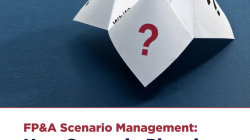It is very important to have well-established mechanisms for planning and budget control. So, managers can quickly correct the unit's tactical plan based on present market conditions, and faster it rolls up into the corporate's strategic plan.
Driver-based planning is a key topic for any FP&A team today. But what is not always clear is just how driver-based planning is connected to requirements from stakeholders.
Best practices from mature technology businesses have stable recurring Rolling Forecasts based on momentum, executive buy-in and a solid understanding of the drivers in both revenues and costs. And those forecasts have defined processes to ensure the right level of risk is mitigated with the right action plans to drive success. However, start-ups have a different focus: getting their product to market and ensuring there is a fit, or there is no business
For FP&A in today’s business climate, agile planning is basically the speed and flexibility with which organisations can make adjustments to what it wants to achieve.
Scenario management plays a vital role in a world of irrelevant budgets and inaccurate forecasts.
In recent years, organisations all over the world have been undergoing a rapid digital transformation. New tools and technologies are opening up the possibility of more collaborative business processes, including planning.
Pagination
Subscribe to
FP&A Trends Digest

We will regularly update you on the latest trends and developments in FP&A. Take the opportunity to have articles written by finance thought leaders delivered directly to your inbox; watch compelling webinars; connect with like-minded professionals; and become a part of our global community.






